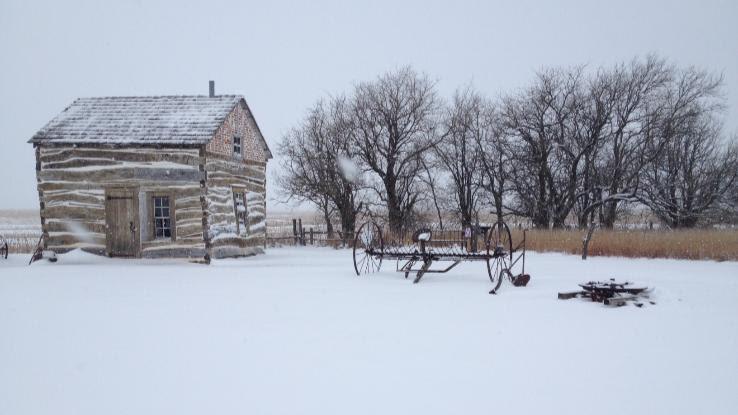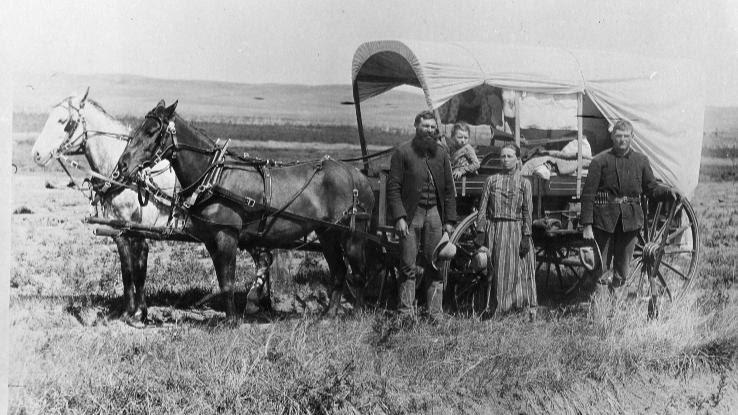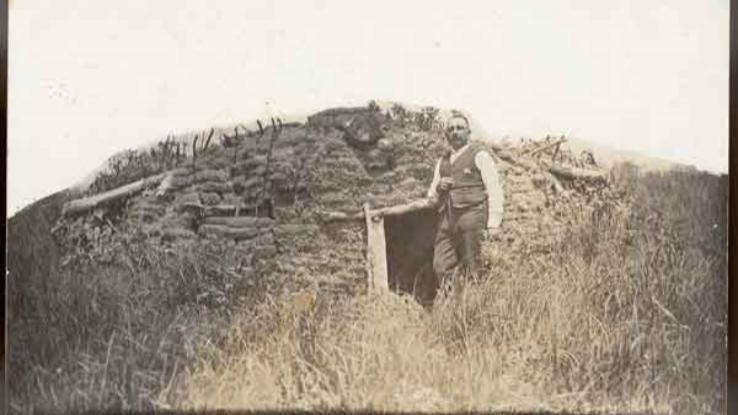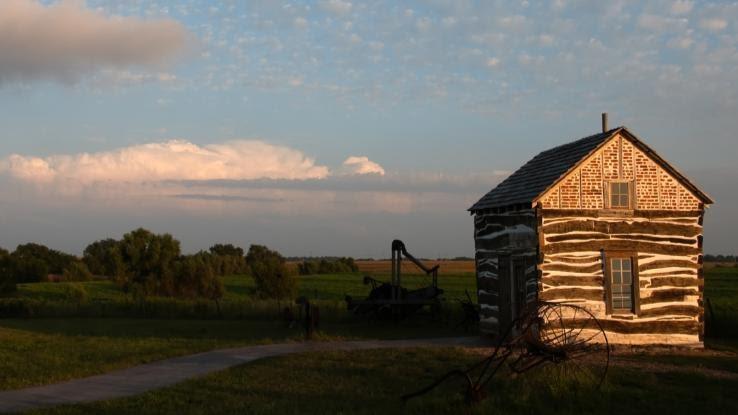What Was the Reconstruction Act of 1867? What Did This Do to Texas?

Many historians consider the Homestead Act one of the most important pieces of legislation e'er passed in the United States. President Abraham Lincoln signed the Homestead Act into police force in 1862 in order to provide more people with the opportunity to become landowners.
To best empathize why this law became so meaningful, it helps to take a deeper wait at what the rules of the Homestead Act involved and why it played such a big role in the settlement of the American West. Exploring the pros and cons of the Homestead Deed — and checking out a National Park that's dedicated to the era — further demonstrates the significance of this police.
How Did the Homestead Act Piece of work?
The Homestead Human activity created a police that gave people from all walks of life the opportunity to become landowners, and it also encouraged people to movement to the western part of the country and brainstorm settling it. Every bit President Lincoln himself put it, the purpose of the act was "to elevate the condition of men, to lift artificial burdens from all shoulders and to requite everyone an unfettered start and a fair run a risk in the race of life."

The provisions of the Homestead Act allowed about anyone who was willing to work hard to claim a 160-acre area of land for a filing fee of $18. In gild to go along the land, however, homesteaders had to see sure requirements. To get landowners, they had to:
- Be at least 21 years of age or the head of a household
- Concur to live on the land, build a home on information technology, subcontract it and make improvements to it for at least five years
- Certify that they had never borne arms against the Us, meaning they had never fought confronting the land
Once a homesteader had claimed a slice of land and fulfilled all of the requirements, they had to find at to the lowest degree 2 neighbors who could verify they were post-obit the rules. At the end of five years, they were considered "proved up" and would receive a patent for the land that fabricated them the official owners. Soldiers who had fought for the Union during the U.Due south. Ceremonious War were allowed to subtract the time they served in the war from the v-twelvemonth requirement. If people were willing to spend $200 for their 160-acre parcels, they only needed to reside on the land for six months to establish residency earlier existence granted official buying.
1 of the nigh important benefits of the Homestead Act was that information technology gave women, formerly enslaved people and newly arrived immigrants the hazard to go landowners when they previously hadn't had the opportunity to do so. The deed fabricated huge amounts of land available to the public and resulted in the settlement of 270 meg acres, which was around 10% of the total area of the Usa.
What Are Some Pros and Cons of the Homestead Human action?
The Homestead Act was a benign opportunity for many people who might never have otherwise been able to afford large amounts of country. On the other hand, it did require new landowners to build and run farms, which many people also couldn't afford to exercise.

The act did, however, stop upwardly leading the Us' expansion into the West. Claims were filed in thirty states, with much of the land being settled in Montana, North Dakota, Colorado and Nebraska. Although this was helpful for those who were able to take advantage of the Homestead Act, it was devastating for many Native Americans, who found themselves forced off of their country in order to make way for homesteaders.
Some other problem was that there were large numbers of people and companies that took advantage of the Homestead Act in less-than-honest means. It didn't assist that some of the wording of the law wasn't very specific and ended up assuasive people to utilize loopholes. For instance, the deed stated that 12×14 homes had to be built on each piece of land. Unfortunately, it didn't specify that these measurements were in anxiety, and so some people got around the requirement by building 12-inch by 14-inch "homes."
Additionally, due to the nature of the West at the time, it was almost incommunicable to enforce the requirements of the Homestead Deed considering there only weren't enough regulators to brand sure that everything was upwardly to code. Equally a result, the National Archives reveals that "of some 500 1000000 acres dispersed past the General State Office betwixt 1862 and 1904, only eighty million acres went to homesteaders. Indeed, small farmers acquired more state under the Homestead Act in the 20th century than in the 19th."
Why Did the Homestead Deed Come up to an End?
While many people associate the Homestead Act with pioneers of the 1800s, it actually remained an active law until 1976. Information technology did meet a major bump forth the style, all the same, when President Franklin D. Roosevelt passed the Taylor Grazing Act of 1934.

The Taylor Grazing Act was intended to regulate cattle-grazing activities on public land, which had become over-grazed by farming activities that damaged the soil. Even so, the law also ended up turning a smashing deal of rangeland into grazing districts managed by the Bureau of Land Direction. The Homestead Act finally met its official cease in 1976 when it was replaced with the Federal Land Policy and Management Act, which stated that "public lands be retained in Federal ownership." This means the formerly public land that could've been eligible for Homestead Human action settlers became property of the U.Due south. federal government. Interestingly enough, homesteading was still allowed in Alaska until 1986.
By 1976, the Homestead Human activity seemed to have more often than not run its course. The final person ever to receive land under the act was a man named Ken Deardorff, who filed a claim in 1974 and fulfilled all of the requirements by 1979. Unfortunately, information technology took until 1988 for the government to finally get his land patent to him for reasons that are nevertheless unknown.
History reveals that the get-go person e'er to gain ownership of land under the Homestead Deed was a man named Daniel Freeman, who filed a claim in 1863 in Beatrice, Nebraska. Due to the significance of his claim, the Homestead National Historical Park was established just exterior the small Nebraska town. Daniel Freeman's original homestead and the construction he built on information technology are nevertheless a role of the park to this day.
Visitors to the Homestead National Historical Park tin as well enjoy live history demonstrations, arts and crafts, and more at the park's Homestead Educational Center. The park hosts a variety of other of import buildings, such as a 14-pes by 16-foot cabin built in 1867 by a homesteader named George W. Palmer. Yous can likewise see the "Freeman Schoolhouse," which served as a schoolhouse for prairie children from 1872 until 1967. In that location'south even a museum full of artifacts and information from the homestead era, access to genealogical information and miles of nature trails to explore, demonstrating the importance of the act and the impact it had on American history.
Source: https://www.reference.com/history/what-is-homestead-act-1862?utm_content=params%3Ao%3D740005%26ad%3DdirN%26qo%3DserpIndex
0 Response to "What Was the Reconstruction Act of 1867? What Did This Do to Texas?"
Post a Comment